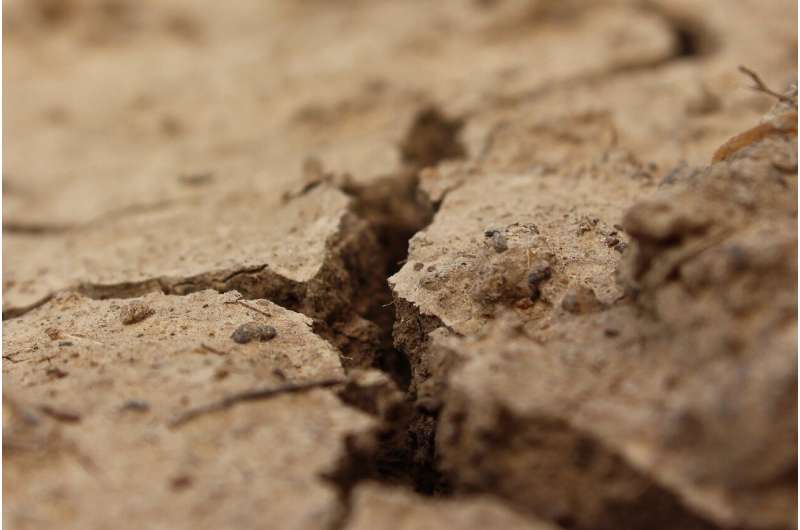Elevated warming, ozone have detrimental effects on plant roots, promote soil carbon loss

Two factors that play a key role in climate change—increased climate warming and elevated ozone levels—appear to have detrimental effects on soybean plant roots, their relationship with symbiotic microorganisms in the soil and the ways the plants sequester carbon.
The results, published in the July 9 edition of Science Advances, show few changes to the plant shoots aboveground but some distressing results underground, including an increased inability to hold carbon that instead gets released into the atmosphere as a greenhouse gas.
North Carolina State University researchers examined the interplay of warming and increased ozone levels with certain important underground organisms—arbuscular mycorrhizal fungi (AMF) - that promote chemical interactions that hold carbon in the ground by preventing the decomposition of soil organic matter, thereby halting the escape of carbon from the decomposing material.
"The ability to sequester carbon is very important to soil productivity—in addition to the detrimental effects of increasing greenhouse gases when this carbon escapes," said Shuijin Hu, professor of plant pathology at NC State and corresponding author of the paper.
Present in the roots of about 80% of plants that grow on land, AMF have a win-win relationship with plants. AMF take carbon from plants and provide nitrogen and other useful soil nutrients that plants need in order to grow and develop.
In the study, researchers set up plots of soybeans with increased air temperatures of about 3 degrees Celsius, plots with higher levels of ozone, plots with higher levels of both warming and ozone, and control plots with no modifications. The resulting experiments showed that warming and increased ozone levels make soybean roots thinner as they save resources to get the nutrients they need.
Soybean cultivars are often sensitive to ozone, Hu said. Ozone levels have been somewhat stable or even declining in some parts of the United States over the past decade but have risen dramatically in areas of rapid industrialization, like India and China, for example.
"Ozone and warming have been shown to be very stressful to a lot of crops—not just soybeans—and a lot of grasses and tree species," Hu said. "Ozone and warming make the plants weak. Plants try to maximize nutrient uptake, so their roots become thinner and longer as they need to exploit the sufficient volume of soil for resources. This weakness results in a reduction of AMF and faster root and fungal hyphal turnovers, which stimulates decomposition and makes carbon sequestration more difficult. These cascading events may have profound effects underground, although the plant shoots appear normal in some cases."
Hu said he was surprised that the plant shoots weren't greatly affected by the stresses of warming and ozone; the biomass of plant leaves in both control and experimental plots was about the same.
Perhaps even more surprisingly, Hu said that more warming and ozone changed the type of AMF that colonize soybean plants.
The study showed that levels of an AMF species called Glomus decreased with more warming and ozone, while a species called Paraglomus increased.
"Glomus protects organic carbon from microbial decomposition while Paraglomus is more efficient at absorbing nutrients," Hu said. "We didn't expect these communities to shift in this way."
Hu plans to continue to study the systems surrounding carbon sequestration in soil as well as other greenhouse gas emissions from soil, like nitrous oxide, or N2O.
More information: Y. Qiu el al., "Warming and elevated ozone induce tradeoffs between fine roots and mycorrhizal fungi and stimulate organic carbon decomposition," Science Advances (2021). advances.sciencemag.org/lookup … .1126/sciadv.abe9256
Journal information: Science Advances
Provided by North Carolina State University




















